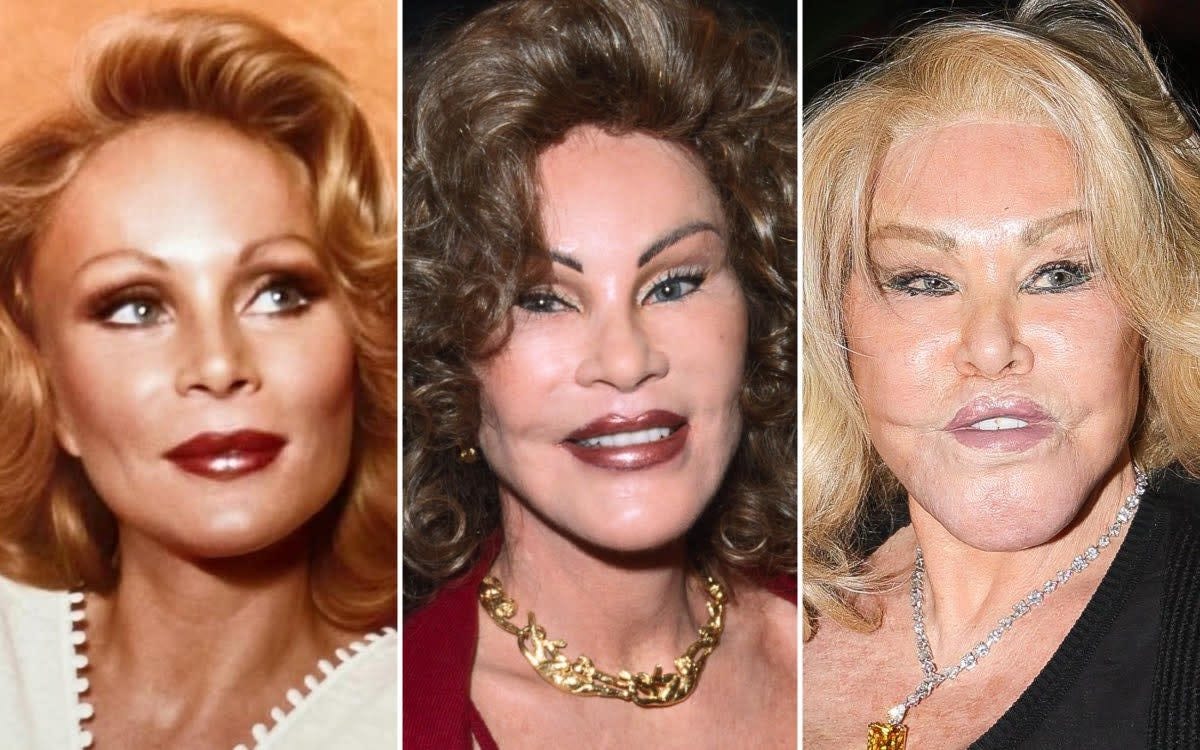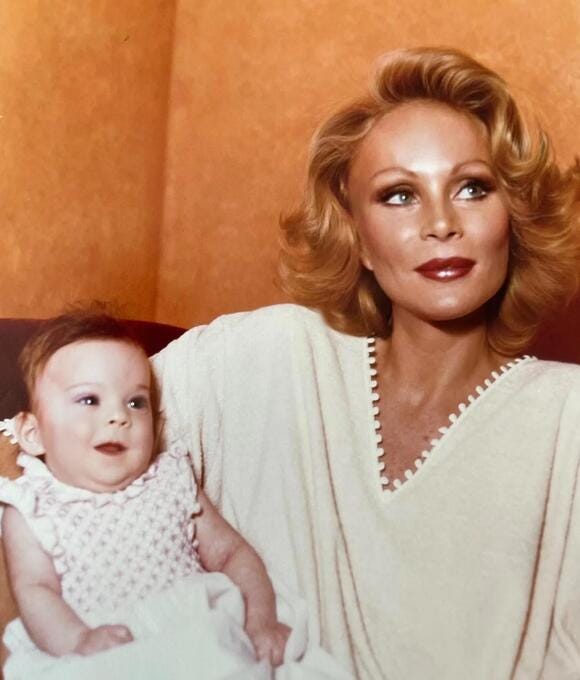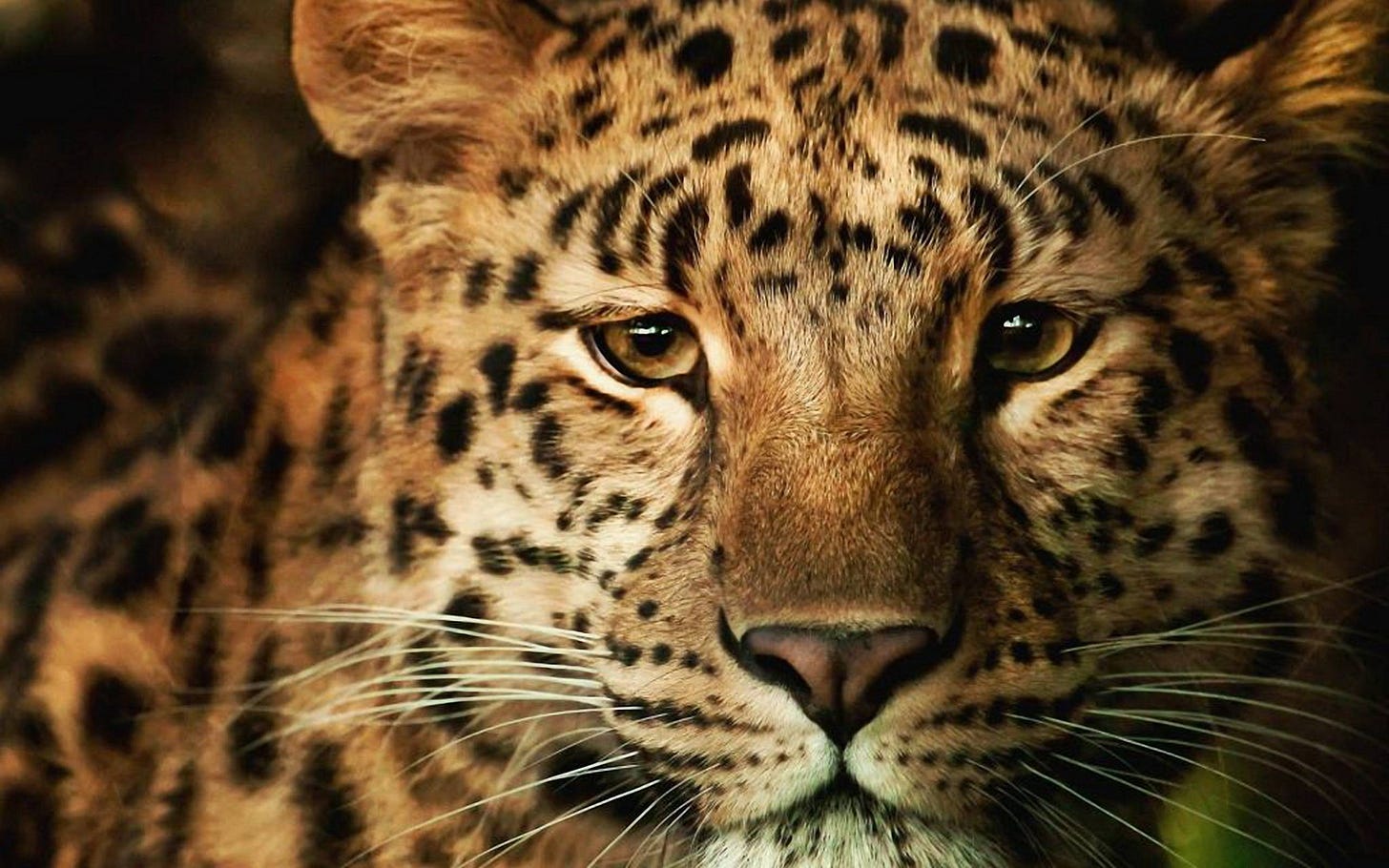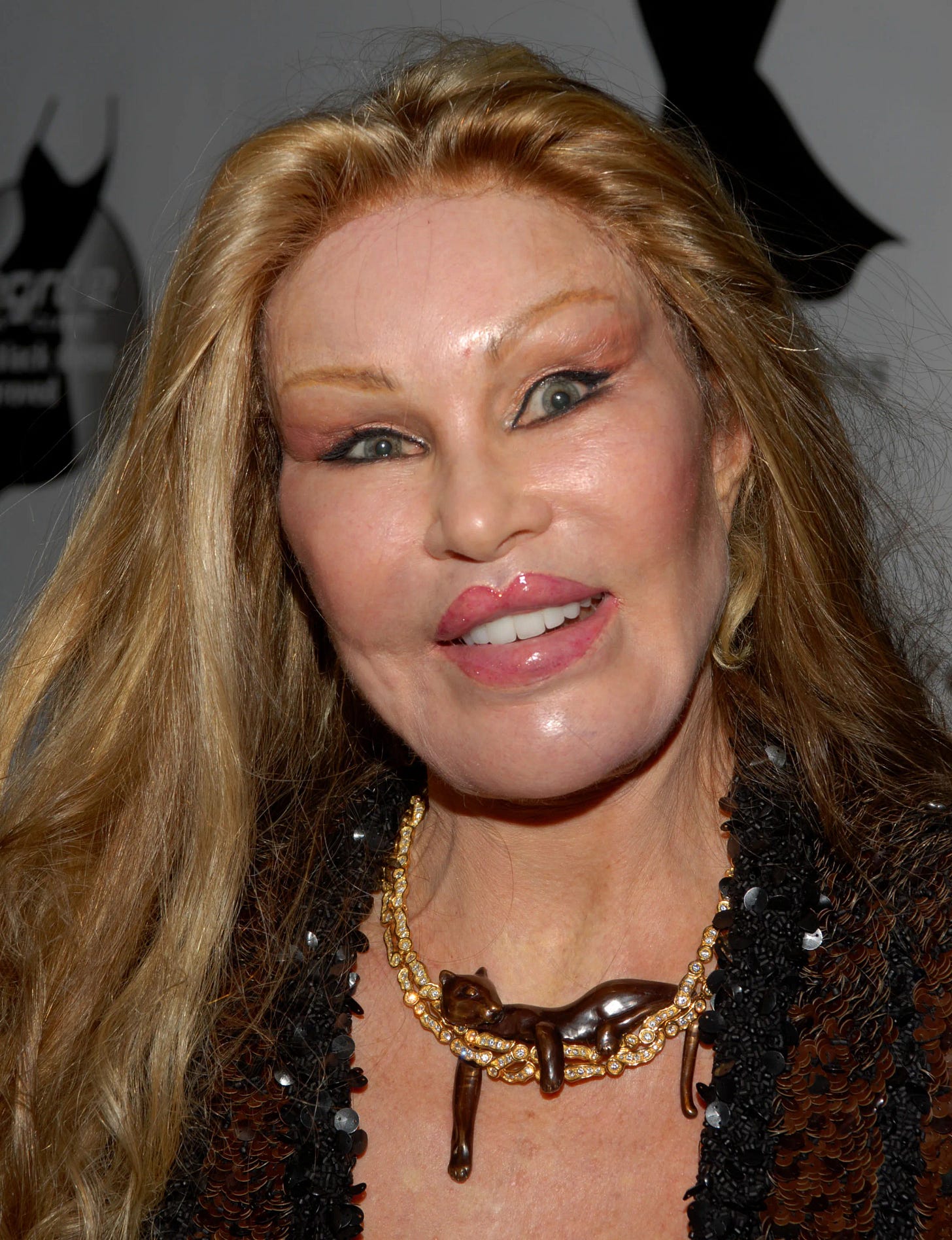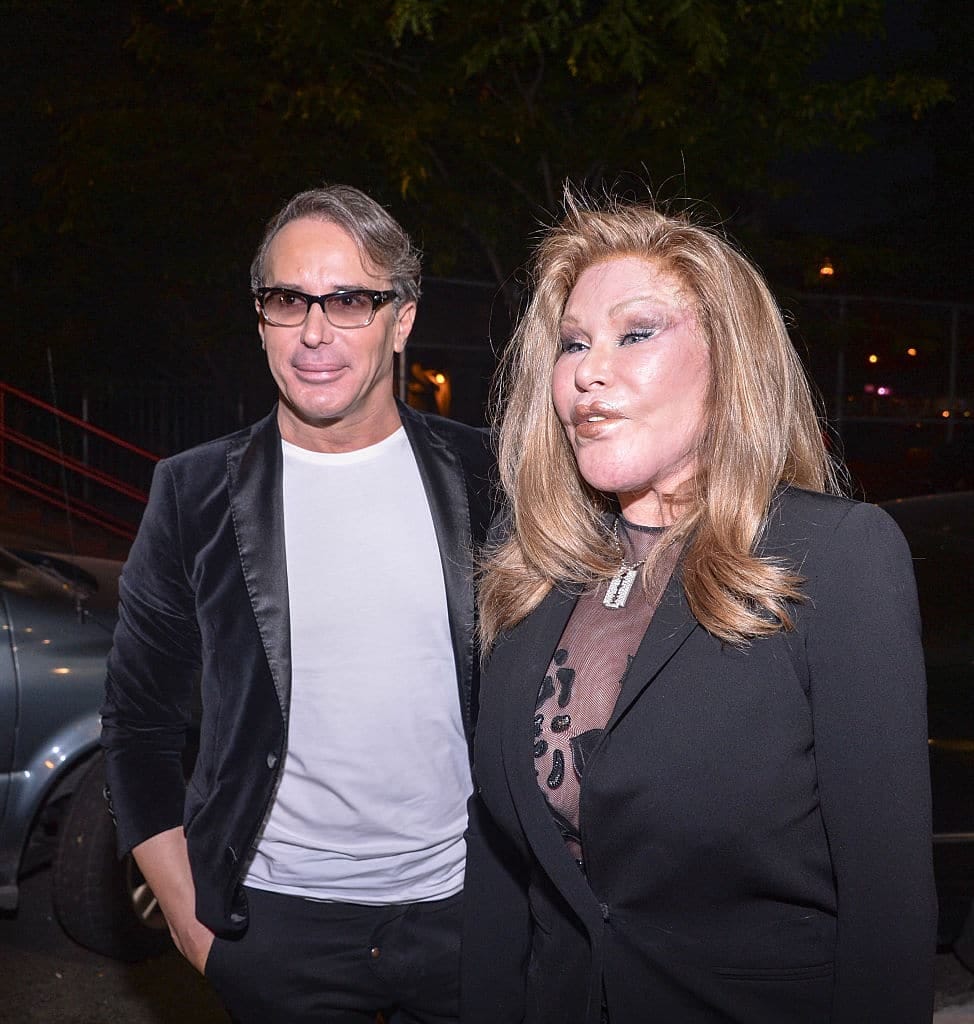New York Socialite Referred To As, "The Bride of Wildenstein" and "Catwoman," Dies At 84
Contrary to popular belief, one can have too much plastic surgery
The word “unrecognizable” is often bandied about when it comes to celebrity makeovers. But scarcely has it been more apt than in the case of the late Jocelyn Wildenstein, who died last week.
With high cheekbones, wide eyes, and a button nose, Jocelyne Périsset cut a glamorous figure as a young Swiss socialite on the rise in 1955, aged 15, in one of the earliest images released of her. By the time of her death on New Years Eve, however, that face had been replaced with the one she will be remembered for – thick lips, swollen cheeks, a wide nose and elongated, cat-like eyes.
Périsset realized if she was to join the global jet set, being flexible about her identity would help. Her early life was marked by travels across Europe and Africa, experiences that broadened her horizons and introduced her to influential personalities. Training as a big game hunter and pilot went a long way in putting her relatively humble Lausanne upbringing (as the daughter of a sports shop owner and housewife) behind her. In 1977, during a safari in Kenya, she met French art dealer and safari lover, Alec Wildenstein, heir to a $10bn fortune. Their shared interests led to a swift romance. In 1978, the then 38-year-old’s efforts bore maximum fruit: she eloped with him. The couple had two children and enjoyed a lavish lifestyle, frequently hosting extravagant events and mingling with the elite.
The couple had been married a year when she commented to her new husband that his eyes looked “baggy”. They booked eyelifts. It was the start of her “addiction”.
She was becoming hooked at the beginning of plastic surgery’s new dawn. Medical techniques pioneered by Sir Harold Gillies to help fix disfigured soldiers returning from the First World War were, by the 1970s, becoming fashionable.
“Plastic surgery was starting to become mainstream, but it would have been an exclusive group of people having it done,” explains British Association of Aesthetic Plastic Surgeons president Nora Nugent, before adding that, though the practice exploded in popularity during Wildenstein’s lifetime, things also evolved.
“Around the 1980s we started to better understand facial anatomy,” explains Nugent. “The first facelifts were essentially tightening the skin, but skin is elastic so it stretches out again. Now we understand more of the underlying support tissues underneath the skin which will hold the lift. We also started to realise the best angles to do a facelift: if you pull the skin straight back, you get an unnatural wind tunnel effect where the corner of the mouth is pulled back.”
“She was thinking that she could fix her face like a piece of furniture,” Alec quipped in 1998, while their divorce played out. “Skin does not work that way. But she wouldn’t listen.” As her appearance became more noticeably unusual, she was dubbed “Catwoman”, “the Lion Queen” or “the Bride of Wildenstein”.
Friends bemoaned the way she had “mutilated herself.” She reportedly underwent numerous procedures, allegedly to appeal to her husband's affinity for big cats. “The lynx has perfect eyes,” opined Wildenstein in 1998. (Though she added her looks were natural, often denying the extent of these surgeries, attributing her appearance to her Swiss heritage. “If I show you pictures of my grandmother,” she said, “what you see is these eyes – cat eyes – and high cheekbones.”)
Her transformation attracted significant media attention, making her a subject of both fascination and criticism.
The Wildensteins' marriage deteriorated in the late 1990s, leading to a highly publicized divorce in 1999. The proceedings revealed details of their opulent spending, with Jocelyn reportedly receiving a settlement of $2.5 billion, along with $100 million annually for 13 years. Despite this substantial sum, she faced financial difficulties in subsequent years, filing for bankruptcy in 2018. Her extravagant lifestyle, characterized by luxury properties and high-end fashion, contributed to her financial decline which is shocking actually.
In her later years, Jocelyn maintained a relationship with fashion designer Lloyd Klein, whom she met in 2003. Their partnership, spanning over two decades, was marked by both affection and controversy, including legal disputes and allegations of domestic incidents. Despite these challenges, they remained together until her passing.
Jocelyn Wildenstein passed away on December 31, 2024, at the age of 84, due to a pulmonary embolism while in Paris. Her death was confirmed by her partner, Lloyd Klein, who described her passing as peaceful. He said they were napping, and she did not wake up. Plans were made for a private funeral in Paris, followed by the scattering of her ashes at her ranch in Kenya, where her parents' remains also rest.
The public reaction to Jocelyn Wildenstein's transformation has been a mix of fascination, criticism, and sympathy. While some admire her boldness and commitment to her vision, others view her transformation as a cautionary tale about the dangers of excessive cosmetic surgery. Jocelyn's appearance has sparked countless debates about beauty standards, self-expression, and the impact of societal pressures on personal choices.
Her evolution has had a profound impact on media and culture. Her transformation has been the subject of numerous articles, documentaries, and discussions, positioning her as a figure of intrigue and controversy. Jocelyn's story has challenged conventional notions of beauty and prompted a broader conversation about the ethics and consequences of cosmetic surgery in society.
The evolution of Jocelyn Wildenstein sheds light on the complex and often unrealistic beauty standards that society imposes on individuals. Her transformation highlights the lengths to which some are willing to go to achieve their ideal appearance, raising important questions about the role of cosmetic surgery in shaping modern beauty ideals. Jocelyn's story serves as a reminder of the pressures and expectations that individuals, particularly women, face in their pursuit of beauty.
Experts have speculated on the potential psychological factors that may have influenced Jocelyn's decisions, including body dysmorphic disorder and the impact of societal pressures. Understanding these elements provides a deeper insight into Jocelyn's evolution and the complexities of self-image.





